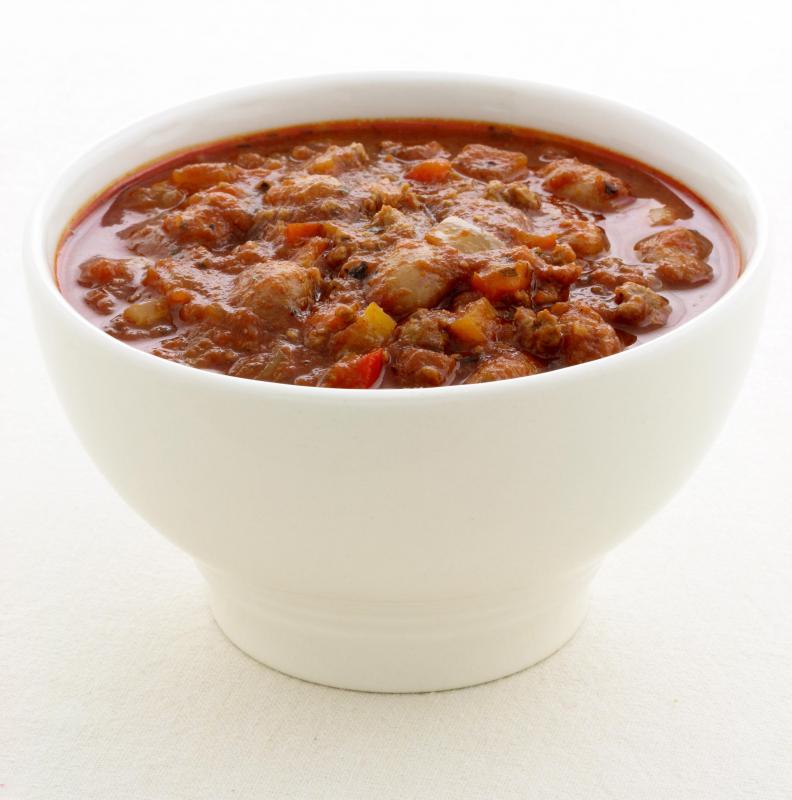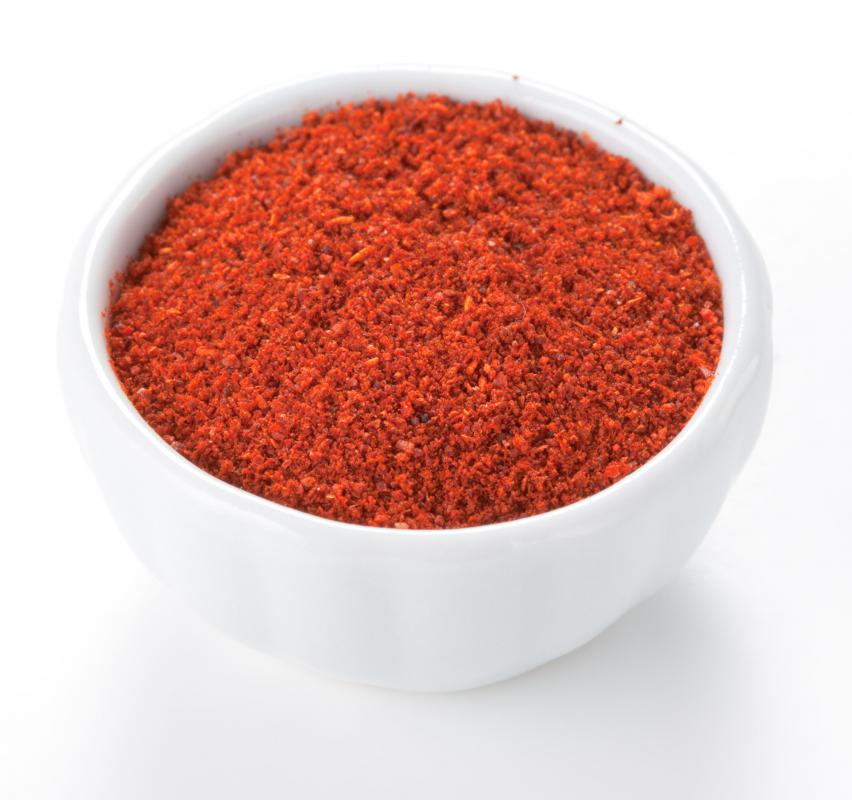At DelightedCooking, we're committed to delivering accurate, trustworthy information. Our expert-authored content is rigorously fact-checked and sourced from credible authorities. Discover how we uphold the highest standards in providing you with reliable knowledge.
What Is Gluten-Free Chili?
Gluten-free chili is a version of a chili recipe that contains no wheat gluten. People with gluten intolerance or sensitivities, such as those with celiac disease, must adhere to a partial or completely gluten-free diet. Gluten is found mainly in wheat and other gluten-based grains, such as rye and barley. Chili, when made from scratch, is a dish that lends itself easily to a gluten-free lifestyle.
Before making gluten-free chili, one must know the ingredients for a typical chili dish. Chili usually refers to the dish chili con carne, whose roots are traced by many to San Antonio, Texas in the mid-1800s. Originally known mainly for its incredible red pepper spice, early versions of the dish may have included some meats, but likely no beans. Contemporary chili usually includes a minimum of chili pepper, tomatoes, beans or meat, and may include an array of additional spices and vegetable ingredients.

To make gluten-free chili, the most reliable approach is to cook it from scratch. Each of the ingredients, if purchased in their purest form, should be gluten free. The heart of any chili lies in its spice profile, which is usually centered around chili peppers, cumin, salt, garlic, onions, and possibly cinnamon, paprika, cayenne pepper, and many others. Spices that are packaged as single-ingredient spices are usually gluten-free unless otherwise labeled. If a pre-packaged chili spice mix or seasoning packet is used, there is a greater chance that the mix will include gluten, and care is recommended when reading the label.

Beyond the spices, the typical ingredients of chili are meat, beans, and vegetables. Meats, as long as they are not processed, are naturally gluten-free. There are cases, however, when fillers containing gluten are added to meat products, but this will likely be indicated on the label. Some individuals on gluten-free diets may also be adhering to vegetarian diets, and may be tempted to include vegetarian meat substitutes in chili. Vegetarian meat substitutes do, however, often contain gluten fillers.

Beans are considered by many to be the most important ingredient in chili. Beans, when purchased dry, are naturally gluten-free. Beans may, however, be processed in facilities that contain gluten. Because dry beans should be rinsed thoroughly and usually soaked for several hours, many cooks believe that the cross-contamination risk is relatively low. In the case of extreme sensitivity, some companies process beans in gluten-free facilities, and this will be noted on the label.
Canned beans are also an option for chili, and whether canned beans contain gluten varies among manufacturers and lines of products. Gluten is often included in canned beans as a thickening agent in the sauce. Several brands do produce specifically gluten-free canned beans, and their gluten-free status is usually well-labeled.
Vegetables are a popular ingredient in many chili recipes, and both vegetables and fruits are naturally gluten-free. If the vegetables or fruits are packaged with a sauce, the product may contain gluten. Again, the presence of gluten should be noted on the label.
Canned chili is commonly available for those who do not want to cook from scratch. Many canned chilis, like canned beans, do contain gluten. There are, however, several manufacturers who produce canned gluten-free chili.
AS FEATURED ON:
AS FEATURED ON:













Discussion Comments
Make chili, and all meals, yourself from fresh whole foods. I have recently gone gluten-free, and dairy-free, and am trying to stay away from all processed foods. I now try to cook everything from scratch - and this also includes sweets, baked goods, ice cream, chips, etc. I want my family to eat healthfully but of course we still want to enjoy treats.
What I have been most amazed to find is that so many "treats" can be made with whole ingredients and don't need to have a single additive to taste good. Ice cream can be made with coconut milk, strawberries, and honey. That's it. Nothing more. Potato chips can be made with potatoes, a little salt, and some olive oil. Gluten free bread can be made with alternate flours like garbanzo or quinoa, water, and olive oil. And certainly, chili does not need an ounce of gluten in it, let alone all the other junk you will read on the side of a can. If chili has gluten, it's because it's being used as a filler.
Keep it simple and use just a few high quality ingredients in your recipes. Buy organic produce and grass-fed, free-range meat.
Post your comments